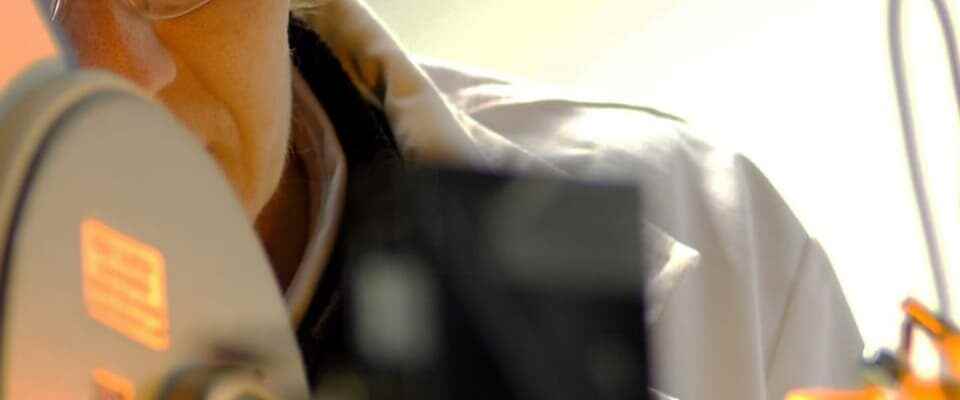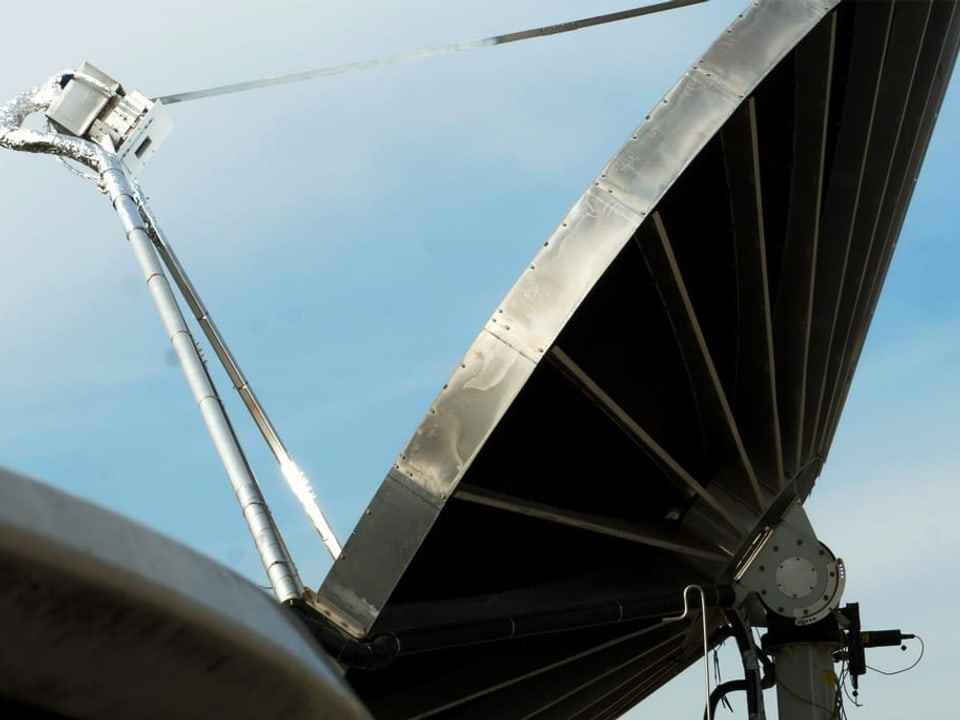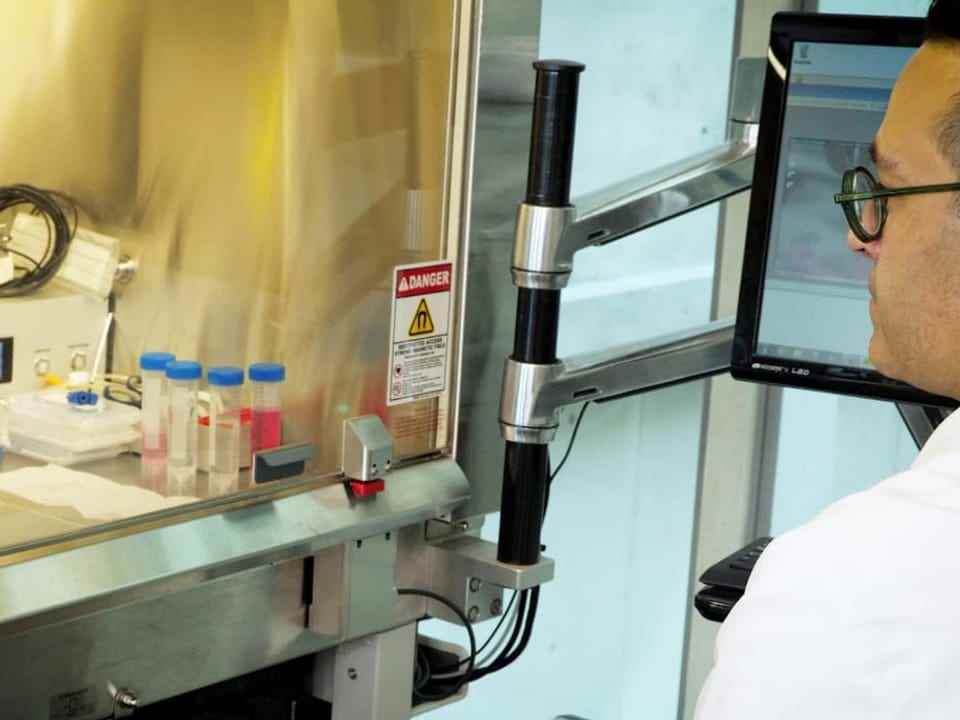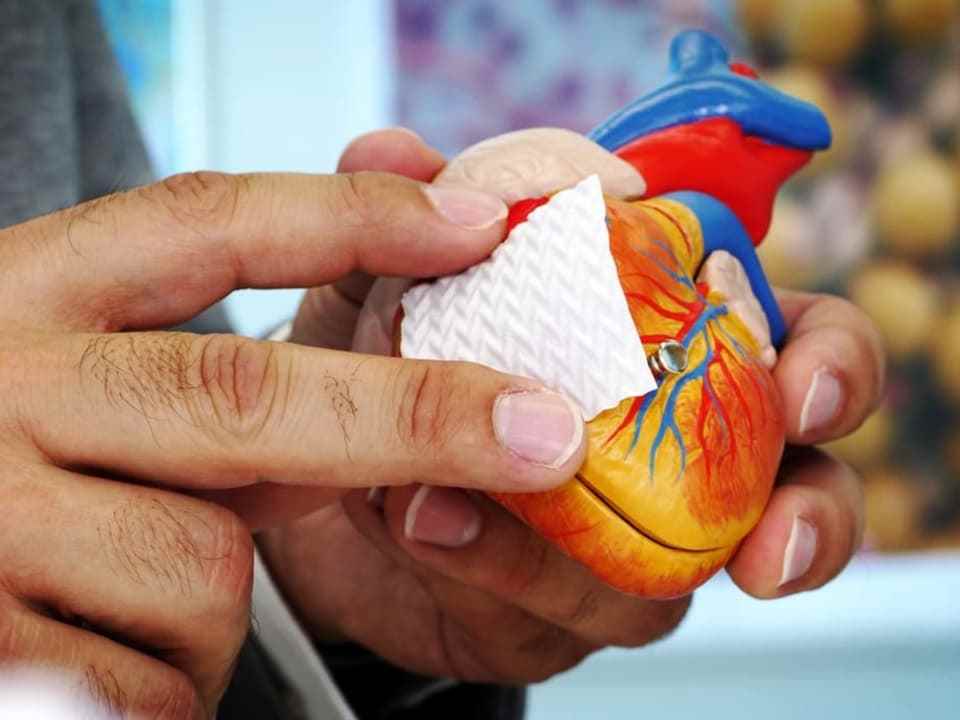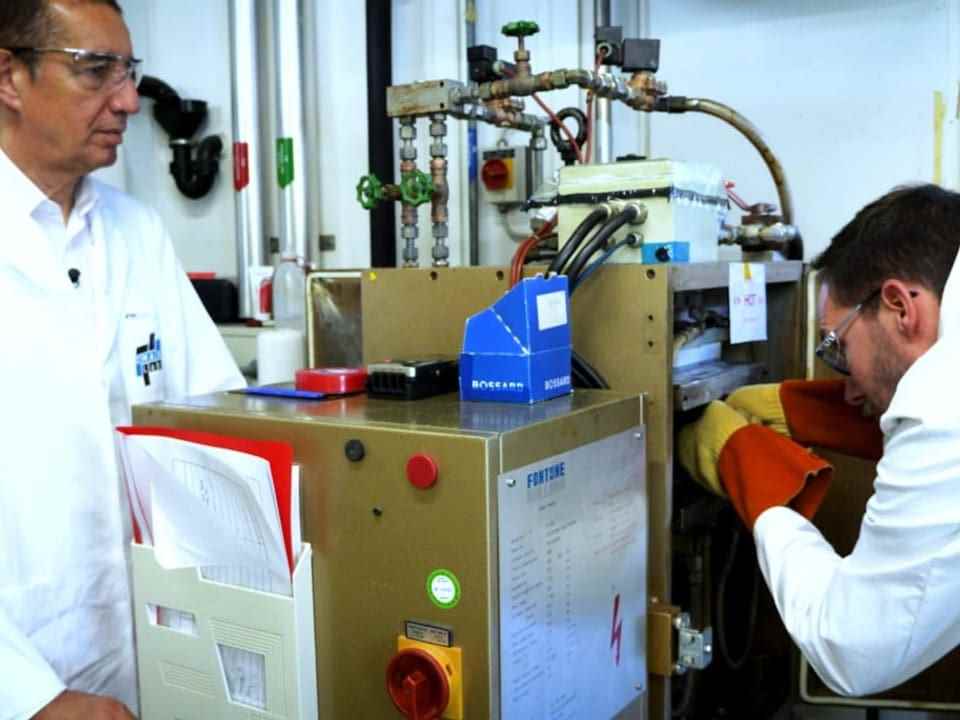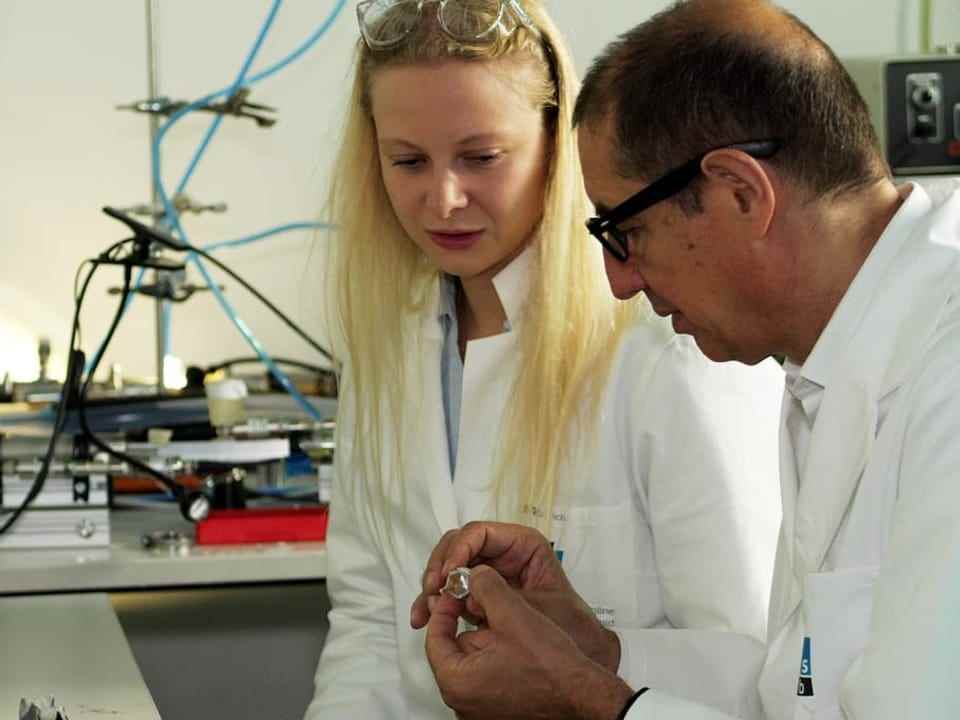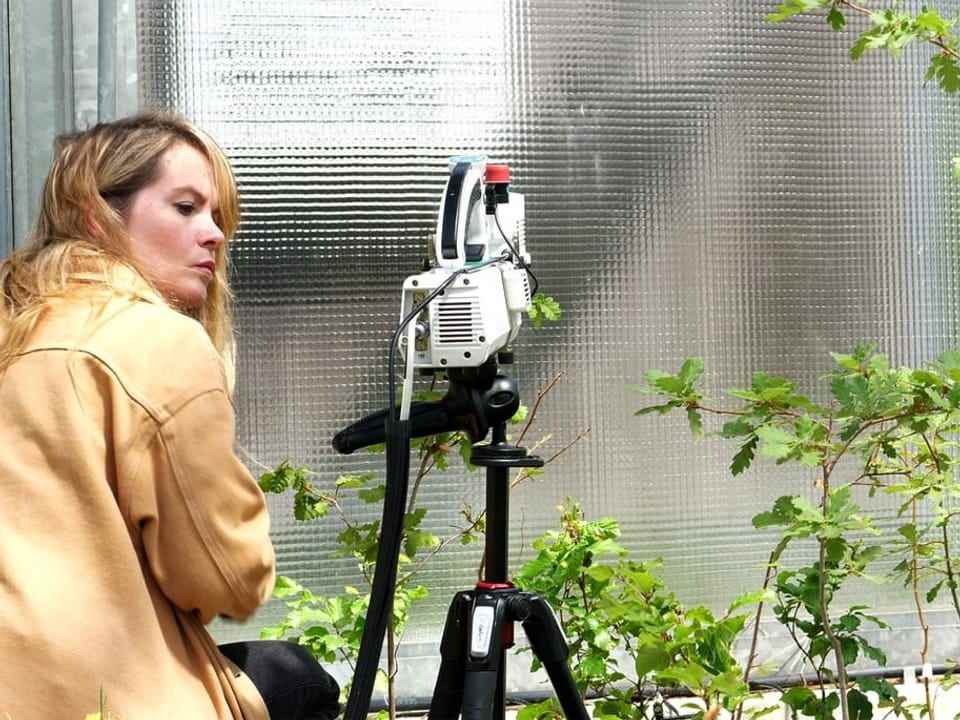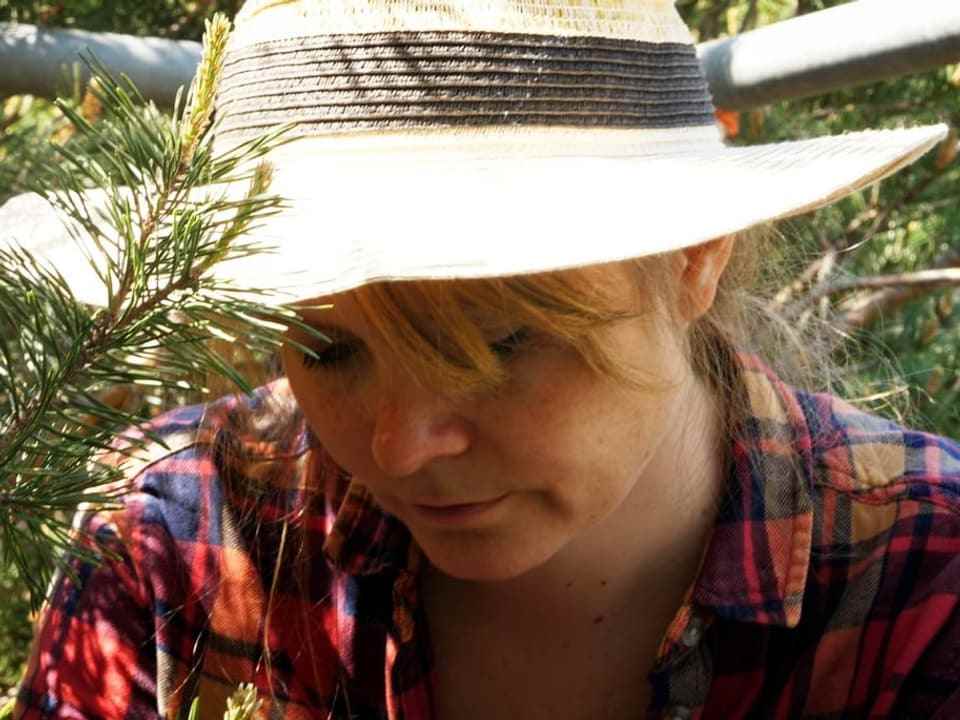contents
Green hydrogen, 3D-printed organs, sustainable plastics: researchers in Switzerland are fighting the problems of our time with good ideas.
Our lives sometimes feel like we are in crisis mode: global warming, waste problems, energy crises. All urgent issues that leave many with feelings of powerlessness. And with a big question: How will we be able to live well on our planet in the future?
Swiss researchers are also working flat out on solutions in their laboratories.
We met four of them and asked them about their vision.
Green gas against the energy crisis
Sophia Haussener from EPFL is researching a way out of the energy crisis in Lausanne. She sees the solution in green hydrogen, with which – she is convinced – we will soon be able to heat, cook and drive cars in a CO2-neutral manner.
The professor for sustainable energy systems uses solar energy to produce hydrogen. A seven meter high parabolic mirror concentrates the captured sunlight onto a reactor. This splits the hydrogen molecules into hydrogen and oxygen.
The research infrastructure is still lagging behind. Even if you could use the existing gas network, you can currently only feed four percent hydrogen into the lines so that they don’t become brittle. And the hydrogen that industry uses today is a fossil substance – produced from natural gas and transported to Switzerland by truck.
“We don’t have that much time anymore,” the researcher urges change. The energy requirement is enormous: “Huge systems are also needed in Switzerland.” For example solar hydrogen factories.
Saving lives with 3D printed organs
Technical achievements such as the 3D printer, which came onto the market 35 years ago, are also encouraging. Today, Maurizio Gullo uses it to print heart cells on special paper. He wants to use this to make organ patches that could replace dead tissue after a heart attack so that the heart can function optimally again.
Gullo’s secret recipe: origami. The head of research at the FHNW School of Life Sciences uses the Japanese art of folding in the hope of soon producing entire organs with a 3D printer.
Today, in Switzerland alone, over a thousand people are on the waiting list for a healthy organ. Especially for a child who needs a new heart, the origami heart from the 3D printer could extend life significantly.
In addition to people, Gullo also wants to save animal lives, for example by testing medicines on a printed kidney in the laboratory: “We can certainly save up to 60 percent of the animal experiments,” says Gullo.
Sustainable materials instead of waste
Paolo Ermanni has declared war on the throwaway society. The specialist area of the ETH professor is plastics. His goal is to use less material that is durable at the same time. After all, high-tech materials that are used for renewable energies are often left behind as waste.
Ermanni and his team have developed a process that also allows glass fibers that can be used in wind turbines, for example, to be recycled. In the end, the plastic could be melted, broken down into its components and reused.
Nature is the model for his research, says the Ticino native: “We have the opportunity to convert approaches from nature into technical structures.” But sometimes the engineer’s art is to find solutions that are even smarter and more efficient than nature.
Strengthening the forest for the future
Charlotte Grossiords has always had a close relationship with the forest. Today she wants to save him for future generations. Because you can already see in Valais how too much heat and long-lasting droughts are drying out the trees. The trees are at their limit: they can no longer absorb enough moisture to cool themselves.
In order to better understand what happens in the forest, Grossiord and her team also examine plants in the laboratory using computer tomography: they use a micro-CT to X-ray small trees and analyze the water balance.
Simply planting heat-resistant tree species is not enough to save the forest. “Whole ecosystems are connected to the forest,” says the EPFL researcher: “If our trees die, we cannot simply replace fungi, animals and other species by planting new trees.”
That is why Grossiord is doing long-term research in Pfynwald for the WSL, the Swiss Federal Research Institute for Forests, Snow and Landscape, and can therefore make precise predictions about global warming in Switzerland. The collected data should help to find solutions for the protection of Swiss forests.
